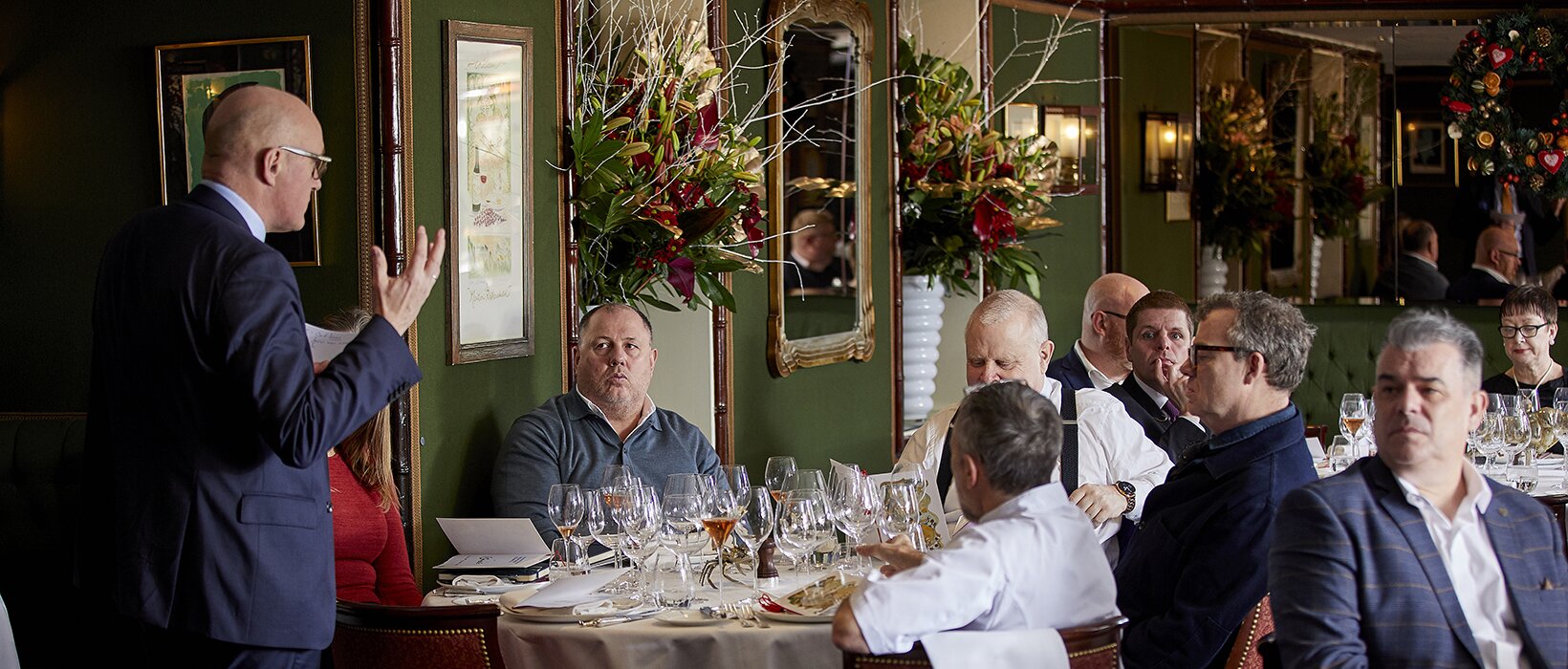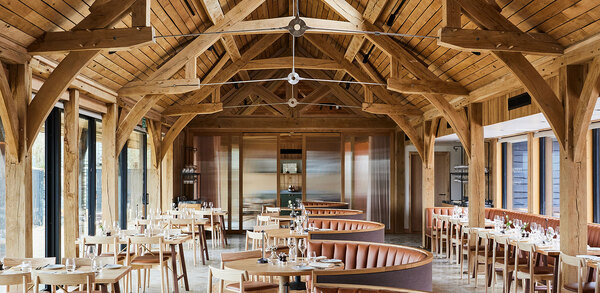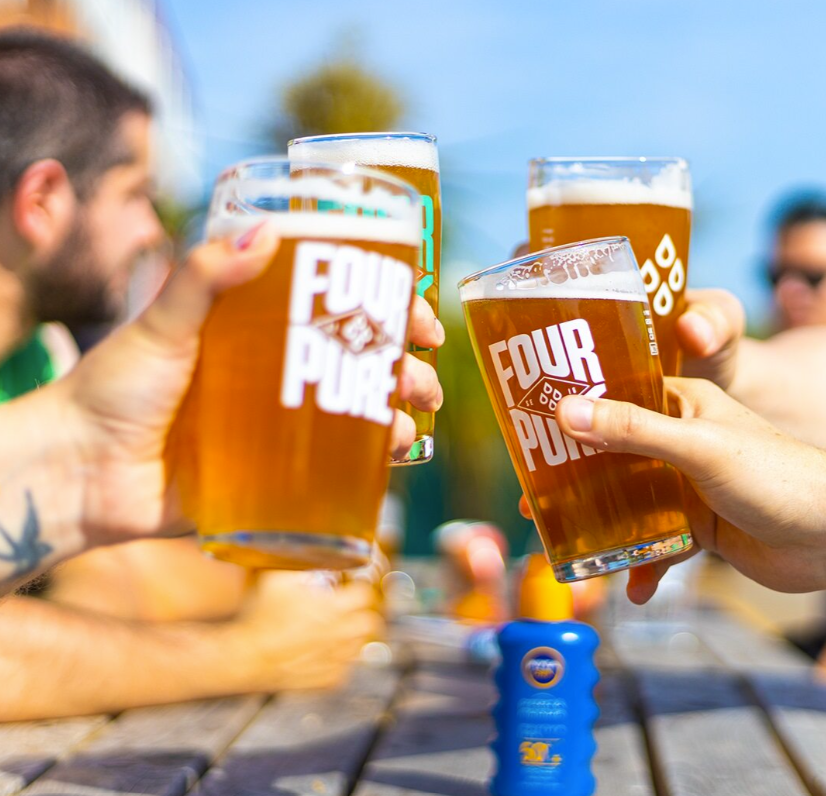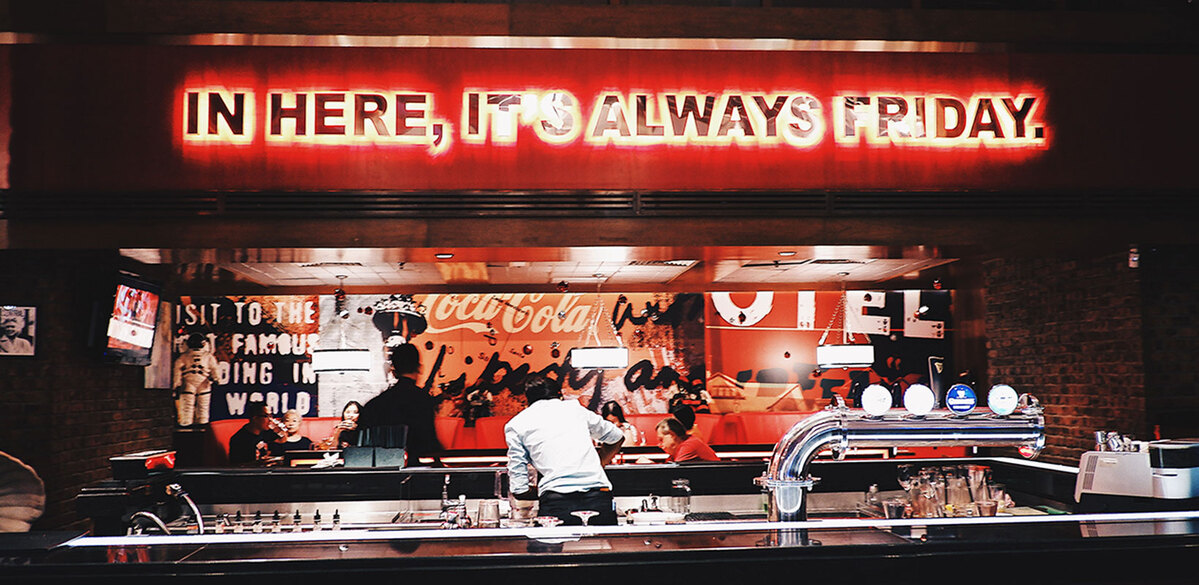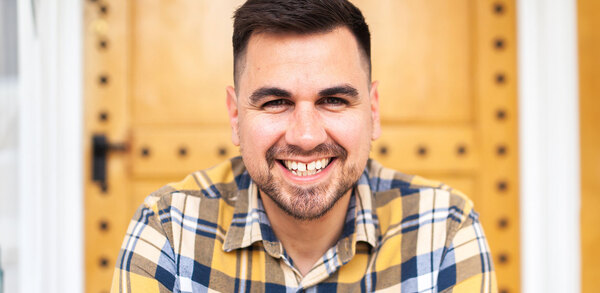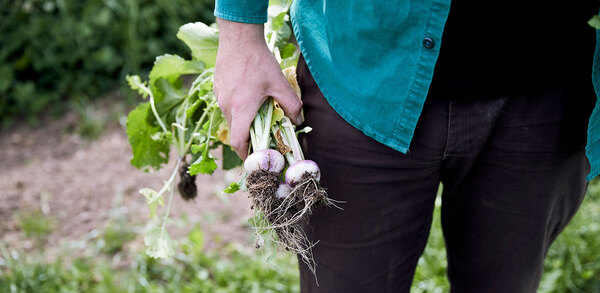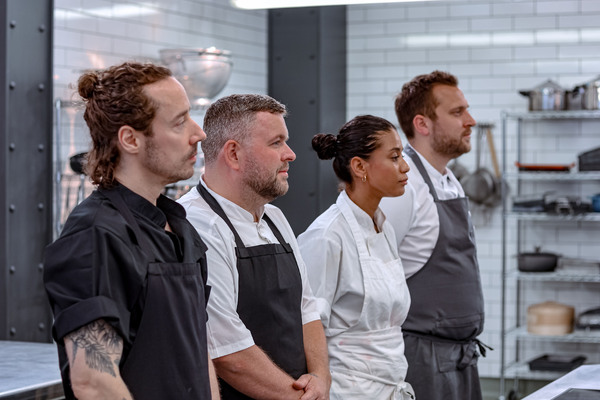Round table: The future of sustainability in seafood
Although the availability of seafood took a dive during the pandemic, it’s starting to return to normal – the perfect opportunity to educate consumers about sustainability and different species. Anne Bruce reports from the The Caterer’s round table at Michel Roux Jr’s Le Gavroche, sponsored by Norwegian Seafood
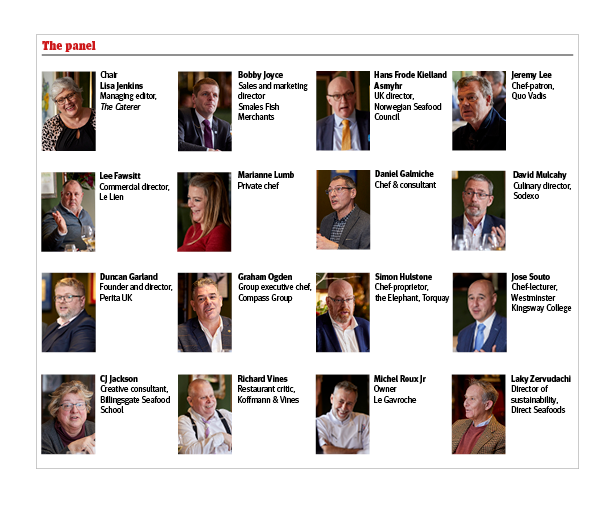
What has the industry learned from Covid? What are the latest trends and challenges affecting seafood suppliers and chefs? And how should chefs communicate with consumers about sustainability in seafood? There was a lot to catch up on as the Norwegian Seafood Council brought leading chefs and industry figures together last year for a roundtable discussion.
The event was the arranged by the Norwegian Seafood Council and took place over a lunch hosted by chef Michel Roux at Le Gavroche in London.
Norwegian Seafood UK director Hans Frode Kielland Asmyhr welcomed chefs, suppliers and industry experts from around the UK, and then handed over to Lisa Jenkins, managing editor of The Caterer, to drive the debate.
Change in working practices
This was the first time that many of the seafood industry leaders present had gathered since 2020, and the changes brought about to the industry due to the coronavirus pandemic dominated discussion.
Michel Roux, in an opening speech, said that when Le Gavroche reopened in May 2021 he stopped lunch service and increased the hours for dinner as a short-term measure. This was mainly due to shortages of staff to keep hours reasonable for those working in the restaurant. Le Gavroche is now opening at 5pm and “seeing huge demand for early dining,” Roux reports. “People may be working in central London and dining and then going home.”
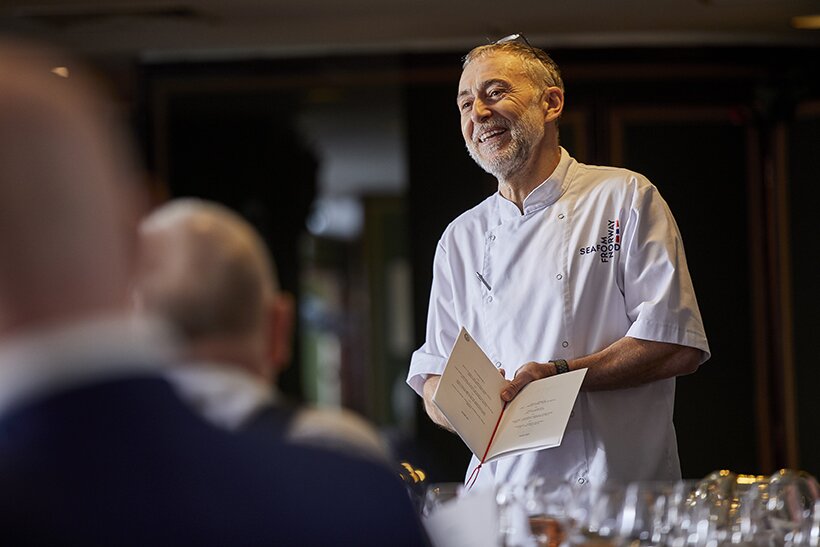
While there were financial implications of the new hours, he said the restaurant was making ends meet, thanks in part to the temporary VAT reductions and business rates relief for the hospitality sector. Table sizes were restricted to six people, from up to 12 previously, which brought the unexpected bonus of reducing the amount of time it took to take a table’s order.
Simon Hulstone said his family-run restaurant, the Elephant in Torquay, had also made major changes due to Covid. During the pandemic the restaurant started selling chilled takeaways for collection and reheating. From serving 20 people in week one, it was soon serving 500 a week.
“Customers who would never have dined with us before are regular customers now after the lockdown,” says Hulstone.
Supply chain issues in seafood
Supply chain disruption has become the biggest problem facing the seafood sector, guests gathered at the round table agreed. Hulstone says: “The supply chain seems fractured. Following reopening, things were missing from deliveries every single day. Fishermen got Covid and the boats did not go out, so there were issues in factories. That led to using more frozen fish. I learnt to work ahead of myself. Buying when available and freezing it down.”
On the supplier side, Laky Zervudachi, director of sustainability at Direct Seafoods, comments: “The supply chain is a disaster now. When we find a solution for one thing another problem comes up. It is very challenging. There are shortages of drivers, containers in the wrong place; on one level you wonder how is it possible for things to be this bad?”
CJ Jackson of Billingsgate Seafood School said that a full range of species are still not available. During the pandemic, the buyer was the consumer rather than a professional chef, and bought species such as cod, haddock, and salmon. “Fisherman had pulled up nets and were not looking for variety during the pandemic,” she explains.
Where previously around 150 species were brought into Billingsgate, this dropped down as a result of the pandemic, and was still only at 120 in November 2021.
Sustainability in seafood
Roux identified the issue of pollution of waters as one that was gaining traction with diners: “I’ve had several comments about the issue of pollution in British waters, that’s getting a lot of publicity and our guests are asking questions.”
UK fishing management was in a huge mess, and that was the result of government decisions over many years, says Zervudachi. There had been a great deal of negative publicity and misinformation around aquaculture, and that needed to be addressed as a sustainable future depended on aquaculture, he explains.
Consumers also needed to accept a greater variety of fish, says Lee Fawsitt, commercial director at seafood supplier Le Lien. While Le Lien brings in 180 tonnes of fish a week, it is the obvious varieties that account for most of the demand, such as salmon, seabass and prawns. “We do need to educate consumers,” he adds.
Patterns of demand were also leaving coastal areas short of local produce, restaurant critic Richard Vines says: “You find burgers on the menu, while all the good local fish is coming down to London or going overseas.”
Sustainability sounds so simple, adds chef Jeremy Lee, just a matter of “shop local and seasonal”, but the issues were actually complex: “We are a tiny island, we have built up trade with the world over centuries.”
Positive messages about sustainable seafood
Sustainability in seafood was a complex area, the guests agreed, and consumers were bombarded with conflicting messages. Private chef Marianne Lumb says that she saw educating clients as part of her role. “Customers are more conscious about sustainability, and I am the filter and I have a responsibility to steer them.”
It was also a key part of the supplier’s duty to be a reference point on sustainability, adds Bobby Joyce, sales and marketing director at Smales Fish Merchants: “We supply fish at scale, to thousands of shops. As someone supplying that product, if a question arises, it’s my job in the middle, to make sure everyone is clear on why the fish is sustainable.”
Cod is seen simply as cod in the UK, but there is a story about its sustainability to tell, promoting the super-premium skrei cod for example, says Fawsitt. “Le Lien was one of the first to take Norwegian skrei on, we pushed it hard. The massive thing is education of the customer.”
“I would rather go to the provenance of the product, skrei cod for example, rather than rely on a label,” comments Jose Souto, chef-lecturer at Westminster Kingsway College.
But in a large operation, you need a means to show that sustainability standards are being followed, says David Mulcahy, culinary director at Sodexo: “You need to have confidence in what you are buying, and with fish our clients demand Marine Stewardship Council certification. If that changes in the future and there is another label that is fine, but we need something.”
Younger customers in particular were interested in the provenance of seafood, Zervudachi explains, but it was a complex area to address on a menu: “We have put a lot of energy into sourcing from the best possible places. Trying to get the message across is challenging in a restaurant situation as it is difficult to explain in a concise way.”
The best approach was to make messaging user-friendly, argued Graham Ogden, group executive chef at Chartwell: “We do an enormous amount of education, using simple messaging to inspire a child to choose something different.”
A QR code on the menu could show a picture of the place where the fish comes from, for example. “It is not just about stating the provenance, it is the lifestyle behind the provenance,” he says. “It is not the label that matters, it is why we choose it.”
How can the industry promote seafood?
Richard Vines: “At the moment good fish is not available where it should be as all the good fish is going overseas. It should be a done deal on menus, especially in coastal areas, but instead it’s all burgers. Vegan isn’t the way to go!”
CJ Jackson: “Step out of your comfort zone and try something new. Choose hake as an alternative to cod and haddock, for example.”
Graham Ogden: “There is error in complication. Be bold with amazing produce, serve it simply and have confidence. Don’t buy into the latest trick.”
Laky Zervudachi: “Embracing aquaculture is vitally important for the future of the world and in being able to provide enough sustainable protein. Norway is fantastic at doing this. The oceans are there, and aquaculture is a fantastic way of using them to our benefit.”
Michel Roux: “High-profile chefs have a responsibility to get that sustainability message out there. In June turbot hit £40 per kg. I put ray wings on my menu instead, and they sold like hot cakes. This was a sustainable dish I was proud to have on the menu.”
Jeremy Lee: “I am a firm believer that the challenge starts in the home. If you come from a home where good food is the order of the day, you learn to appreciate what you are eating. It is a tragedy that cooking moved from being seen as education to becoming entertainment on television.”
Lee Fawsitt: “Talk to your fish suppliers to find out what is best that day – don’t just go for the obvious choices. Listen to them and ask what is plentiful, they won’t turn you away.”
Simon Hulstone: “Respect the product. A lot of work goes into growing and catching it and supplying it. It is up to the chef to utilise it in its prime.”
David Mulcahy: “We should collaborate with our suppliers; we have to work together on sustainability.”
Marianne Lumb: “Waste nothing: use the bones for stocks, crisp the skin up. We are so lucky we have all this amazing produce on our doorsteps."
Bobby Joyce: “Try new recipes – you have to be brave and educate yourself and then you will be able to educate your customers and ask the right questions of suppliers.”
Jose Souto: “There are some phenomenal aquaculture products and there is so much misinformation about bad practices. Work with your suppliers.”
Daniel Galmiche: “Be guided by what is in season. Ask questions, try something different and find out about it.”
Duncan Garland: “Don’t have fixed opinions because you have done something that way before. Be adaptable.”



